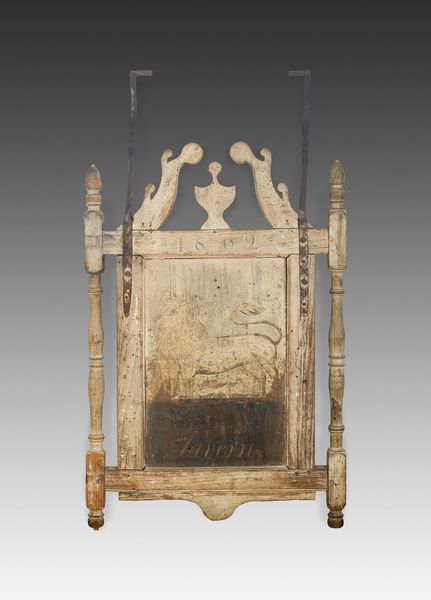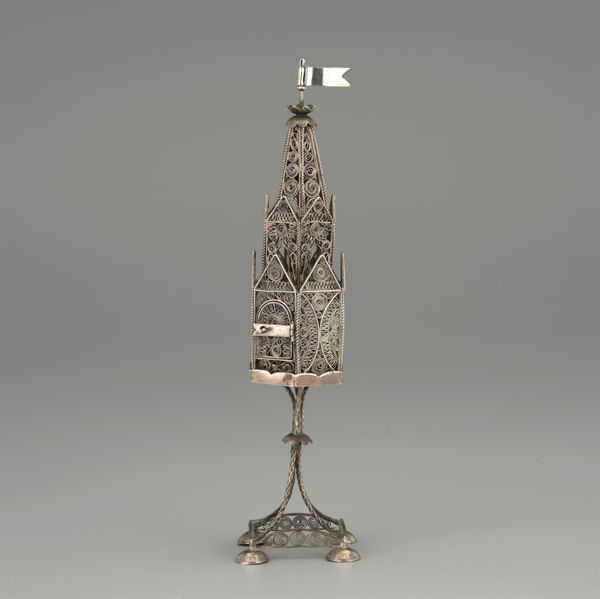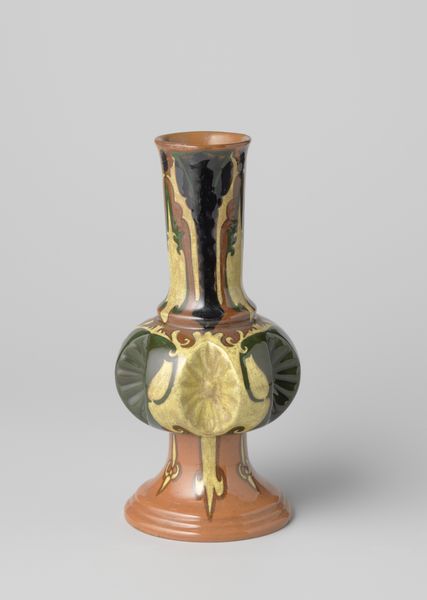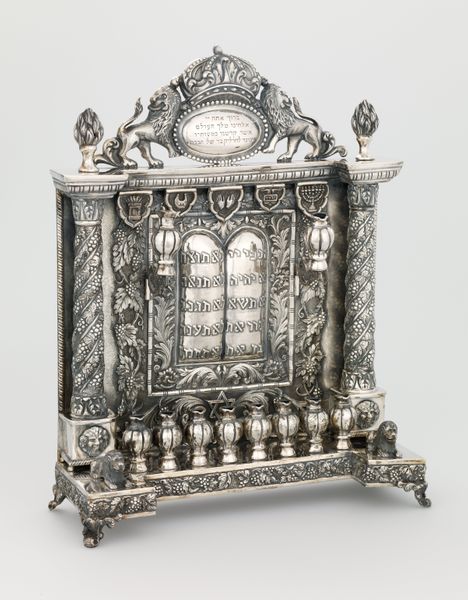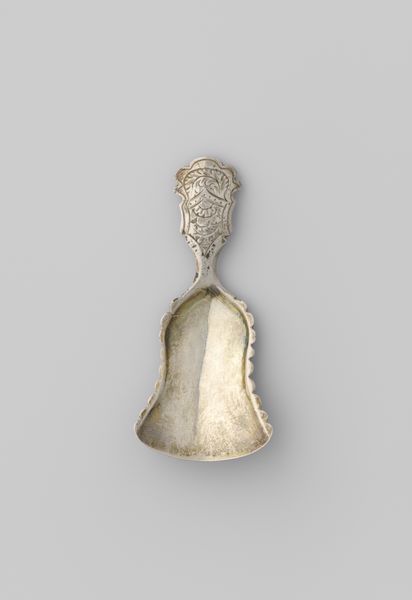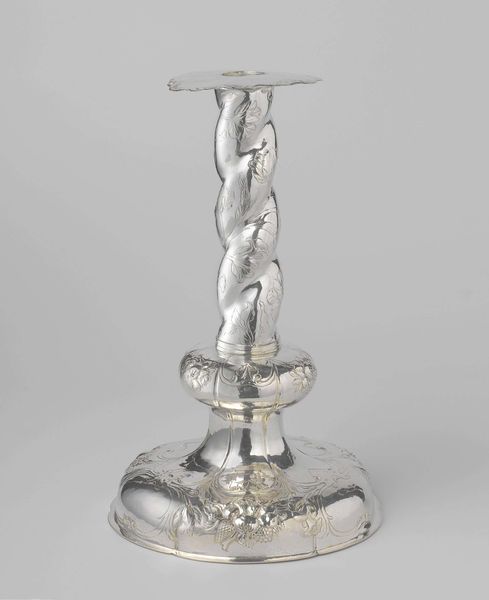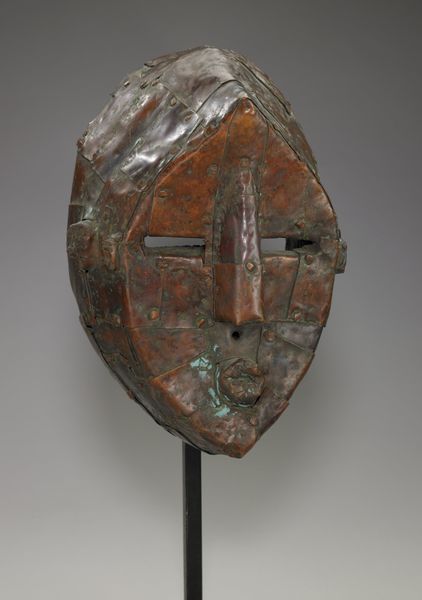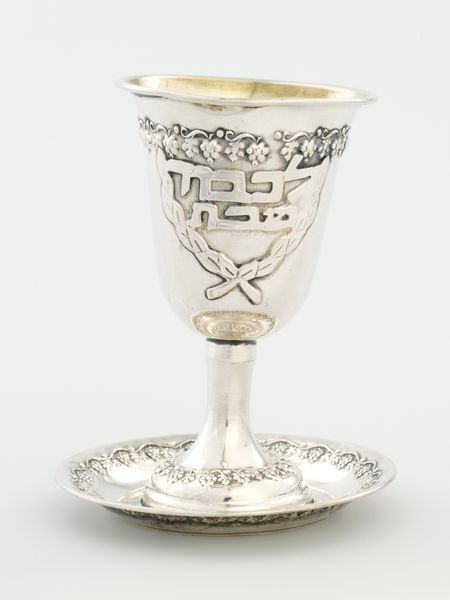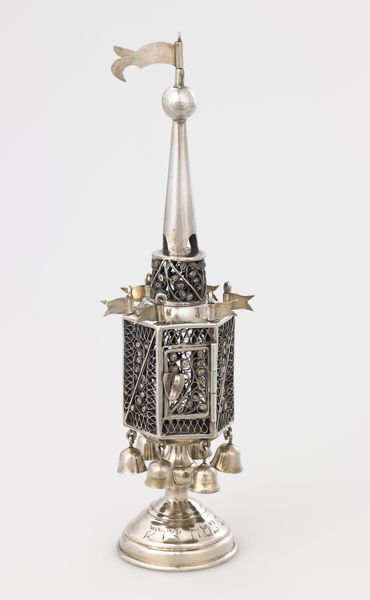
Khamsa Standard Qajar dynasty (1789-1925), ca. early 19 th century
0:00
0:00
brass, silver, metal, sculpture
#
brass
#
silver
#
metal
#
asian-art
#
figuration
#
sculpture
#
islamic-art
Dimensions: 36.7 × 19.4 × 4.1 cm (14 1/2 × 7 5/8 × 1 5/8 in.)
Copyright: Public Domain
Editor: This striking object is a Khamsa Standard, made during the Qajar dynasty, around the early 19th century. It’s crafted from brass and silver, a sculpture in the shape of a hand. What really captures me is how tactile it looks; I want to know everything about the making process! What stands out to you? Curator: Considering the era, examining the raw materials—the brass and silver—and their accessibility in the early 19th century in Persia provides critical insight. The Khamsa form, a protective hand, speaks volumes about the social anxieties and aspirations of the time. Think about the labor involved. The crafting process, how it would have been divided... how does this compare to mass-produced objects of today? Editor: So, the Khamsa shape isn’t just decorative; it's a purposeful choice, embedded in social and historical concerns. It also brings up questions about skilled versus unskilled labor. Were artisans valued for these items? Curator: Absolutely. And look closer: the silverwork, presumably more costly, may suggest a patron with wealth, a religious authority perhaps, or a noble. Who do you think controlled the production and consumption of such religious items at this time? Also, what social message did it send at a gathering when this Standard was publicly presented? Editor: I never thought about consumption. If it wasn't displayed, then its material value diminishes... It also raises a point about accessibility. Items such as this seem so incredibly refined compared to folk art; the labor behind it creates immense meaning. Thanks for that, it's quite insightful. Curator: Indeed. By examining the materials, manufacture, and circulation of an object like the Khamsa Standard, we understand much more than simply its aesthetic qualities. The metal becomes a window into a whole society.
Comments
No comments
Be the first to comment and join the conversation on the ultimate creative platform.

